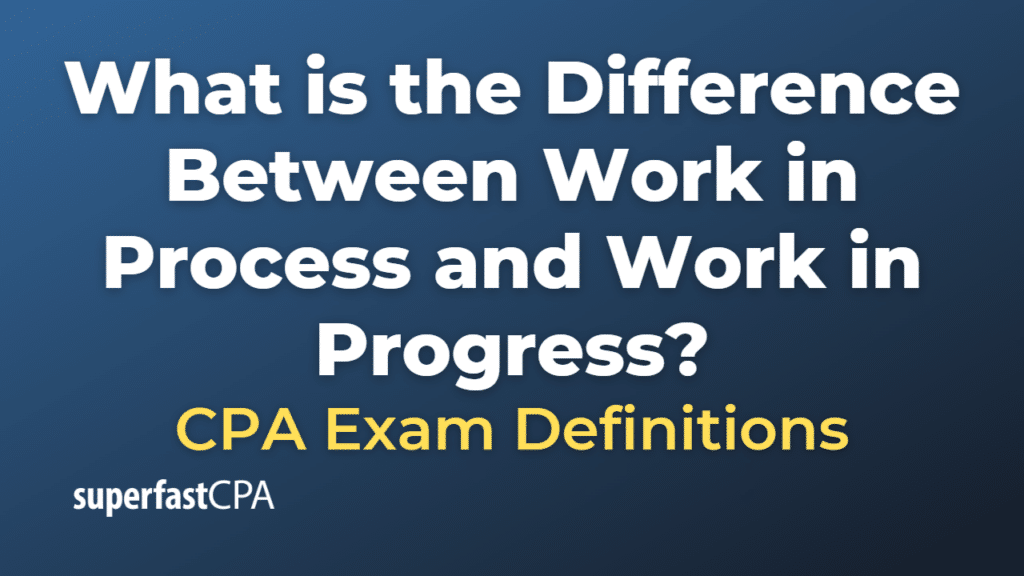Difference Between Work in Process and Work in Progress
“Work in Process” and “Work in Progress” are two terms used in accounting and project management. The terms are often used interchangeably in casual conversation, but they can have distinct meanings in certain contexts:
- Work in Process:
Work in process is a term often used in manufacturing and refers to the value of raw materials and components that have begun the manufacturing process but are not yet completed products. This term is often associated with cost accounting where it represents a specific inventory account, one that tracks costs associated with production units that are only partially complete. - Work in Progress:
Work in progress is a broader term and can be used in various industries, not only manufacturing. It refers to projects or tasks that are still under completion. For instance, in the construction industry, a building that is partially constructed is considered work in progress. In the service or creative industries (like software development, consulting, or writing), projects that are still being worked on would also be considered work in progress.
In summary, the difference mainly lies in the industries in which they are used. Work in process is generally used in the context of manufacturing and cost accounting, while work in progress is used more broadly across various industries. However, it’s important to note that usage can vary, and some organizations may use the terms differently or interchangeably.
Example of the Difference Between Work in Process and Work in Progress
Work in Process:
Suppose a furniture company is manufacturing a batch of 100 chairs. Each chair goes through various stages, including cutting, assembling, painting, and finishing. At the end of a particular day, the company has 50 chairs fully completed, 25 chairs assembled but not painted or finished, and materials cut for the remaining 25 chairs but not yet assembled.
In this case, the 50 chairs that are fully completed would be considered “finished goods”. The other 50 chairs that are either partially assembled or just have materials cut are considered “work in process”. The company would account for the costs of labor and materials that have gone into these partially completed chairs in the “work in process” inventory account.
Work in Progress:
For a work in progress example, consider a software development company working on a new video game. This is a complex project that takes several months to complete. At any given time, there will be parts of the game that are finished, parts that are being actively worked on, and parts that are planned but haven’t been started yet.
The entire game project, until it is fully completed and ready for release, can be considered “work in progress”. The term encompasses all the ongoing efforts toward completing the project, whether it’s writing code, designing graphics, testing, or anything else related to the project.













